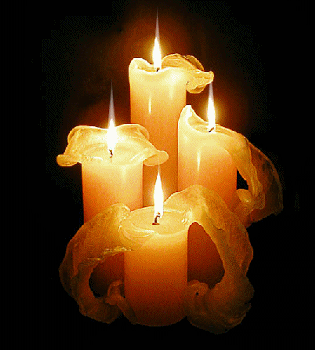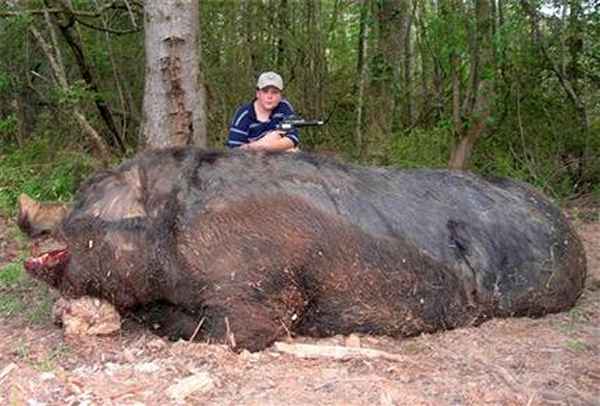
Ahhh the pig. What an unsung hero of the American founding she is! We hear more about the turkey than the pig when, in reality, the pig has done more for the colonists and pioneers than any other animal. But first I must clarify for my honored readers the great difference between the modern pig and her more rustic predecessor who was used by the colonists and pioneers. A little pig history if you will.
 Up until about 100 years ago the pig served a much different purpose than it does today. The pig in essence was a fat factory, its main purpose was to make lots and lots of fat. Why fat you say? Well before the industrial revolution there was no such thing as petroleum products or electricity. So all soaps, candles, and oil had to come from animal fats. Trying to farm oil producing crops was not yet possible for the average farmer due to the fact that one man and a team of oxen could only farm so much land a year. So where could a reliable source of good quality lard and tallow come from? Cows have a lot of fat but take at least two years to reach butcher weight and require lots of hay and pasture to get there. Chickens produce fat but it is too soft for good soap or candle production. However the pig is glorious in its capacity to put on loads of nice hard fat in less than a year.
Up until about 100 years ago the pig served a much different purpose than it does today. The pig in essence was a fat factory, its main purpose was to make lots and lots of fat. Why fat you say? Well before the industrial revolution there was no such thing as petroleum products or electricity. So all soaps, candles, and oil had to come from animal fats. Trying to farm oil producing crops was not yet possible for the average farmer due to the fact that one man and a team of oxen could only farm so much land a year. So where could a reliable source of good quality lard and tallow come from? Cows have a lot of fat but take at least two years to reach butcher weight and require lots of hay and pasture to get there. Chickens produce fat but it is too soft for good soap or candle production. However the pig is glorious in its capacity to put on loads of nice hard fat in less than a year.For the early Americans pigs were absolutely essential to life. They were easy to care for, ate waste foods and rooted for themselves, and reproduced in abundance. They provided the fat necessary to make lye soap, candles, and lard for cooking as all products not produced at home had to be shipped in at astronomical expense and unreliable transportation. Pounds and pounds of soap had to made every year to provide the family with something to clean laundry and themselves with. Lard was used to bake and fry foods with, and also as a form of preservation. Housewife's would make dozens of mince pies in fall after hog killing and then pour rendered lard on top of the pie crust thus sealing it against air. Then they would be placed into a secure unheated room where it promptly froze. The first frozen food! Candles were considered a luxury so most of the lard went into soap or food production. When the colonists first arrived on the northeastern shores they stared in dismay at a vast forest with no seeming end. In fact this became known as the Great Forest, and it stretched from the furthest north of Canada down to Florida and from the edge of the east coast all the way to the Dakotas. This may seem to us as a good thing but the colonists were a bit more practical. With out any valleys for grass hay a cow, ox (the preferred animal for hauling) or horse couldn't survive. In fact grass seed had to be brought to the colonies because the little grass growing on the eastern seaboard was so low in nutrition. One horse goes through at least a ton of good grass hay a winter, and needs ample pasturage from spring through fall. A milk cow requires the same. So that meant that for almost 15 years very few people had these animals until they could clear enough forest and as an extension there was very little butter for cooking and baking. Rendered lard was happily adopted.
 None of the colonists were hunters as wild game was almost extinct in Europe and what there was left was jealously guarded by the aristocracy. Luckily most of the colonists brought pigs and goats with them. Goats are more like deer in their eating requirements and took to the forests like ducks to water so at least milk was available. The pigs themselves were so well adapted to the forests that they must have been a great blessing. Soon after the first colonist arrived half wild pigs began taking over the forest. For those who are not blessed with a love of pigs I should tell you that they have a wild sense of adventure and love nothing more than to break the chains of civilization and go off on their own to conquer the wilderness. Soon wild pigs became so common that most colonist didn't even bother keeping them. They just went out into the forest and killed a few and then brought them home. Numerous reports indicate that they were a dangerous pest. Many people were attacked and children were frequently killed by them. Numerous laws were enacted to try and solve the problem.
None of the colonists were hunters as wild game was almost extinct in Europe and what there was left was jealously guarded by the aristocracy. Luckily most of the colonists brought pigs and goats with them. Goats are more like deer in their eating requirements and took to the forests like ducks to water so at least milk was available. The pigs themselves were so well adapted to the forests that they must have been a great blessing. Soon after the first colonist arrived half wild pigs began taking over the forest. For those who are not blessed with a love of pigs I should tell you that they have a wild sense of adventure and love nothing more than to break the chains of civilization and go off on their own to conquer the wilderness. Soon wild pigs became so common that most colonist didn't even bother keeping them. They just went out into the forest and killed a few and then brought them home. Numerous reports indicate that they were a dangerous pest. Many people were attacked and children were frequently killed by them. Numerous laws were enacted to try and solve the problem. |
| Feral Hog |
As the westward expansion grew pork became even more important. For most pioneers side pork ( a slab of really thick cured bacon) was their only meat besides what they could get in the wild, and was also the fat they used for frying. Lard was used in place of butter on pancakes and biscuits. Bacon, cornmeal, and beans formed the main diet for most of the people.

As farmers grew more prosperous pork still remained an important part of the American diet, and sausage making is still an annual tradition in rural America. Pigs were as important to the founding of our nation as any other food and perhaps more so because they also provided light and cleaning agents. So this Thanksgiving we should thank God for the pig!

That was really interesting and the pictures blew my mind! I had no idea that feral hogs could get that large.
ReplyDeleteThis series of posts is reminding me of the stories in the Little House cookbook. I love food history!
Great post again! I have getting pigs on my list of things to do. lol
ReplyDeleteI thoroughly enjoyed this post and shared with my two younger children that are home from church with a lingering virus. My son also said, "That's a lot of bacon." We have our priorities straight here. ;)
ReplyDelete